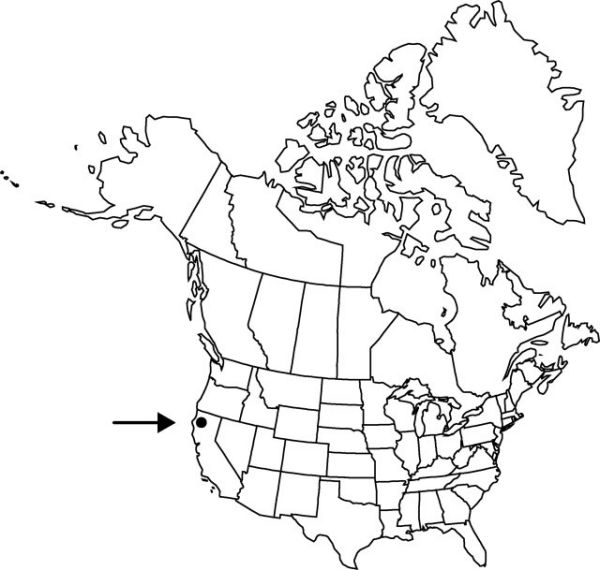Allium hoffmanii
Pl. Life 28: 63. 1972.
Bulbs usually solitary, not clustered on stout primary rhizomes, ovoid, 1.5–2.5 × 1–1.5 cm; outer coats enclosing single bulb, brown or gray, membranous, lacking cellular reticulation or cells arranged in only 2–3 rows distal to roots, ± quadrate, without fibers; inner coats white or pink, cells not visible. Leaves usually deciduous with scape, withering from tip at anthesis, 1, basally sheathing, sheath not extending much above soil surface; blade solid, flat or broadly channeled, ± falcate, 10–22 cm × 4–8 mm, margins entire. Scape usually forming abcission layer and deciduous with leaves after seeds mature, frequently breaking at this level after pressing, solitary, erect, solid, terete, 5–10 cm × 0.5–2 mm. Umbel persistent, erect, compact, 10–40-flowered, globose to conic, bulbils unknown; spathe bracts persistent, 3–4, 3-veined, ovate, ± equal, apex acuminate. Flowers conical to campanulate, 8–10 mm; tepals strictly erect, pink to purplish with prominent greenish midvein, linear-lanceolate, ± equal, becoming membranous, withering in fruit, margins entire, apex acuminate; stamens exserted; filaments papillose-glandular proximally; anthers purple; pollen yellow or gray; ovary crested; processes 6, obscure, central, low, rounded, margins entire; style linear, equaling stamens; stigma capitate, scarcely thickened, obscurely 3-lobed; pedicel 8–15 mm. Seed coat dull; cells smooth. 2n = 14.
Phenology: Flowering Jun–Jul.
Habitat: Serpentine clay
Elevation: 1100–1800 m
Distribution

Calif.
Discussion
Selected References
None.